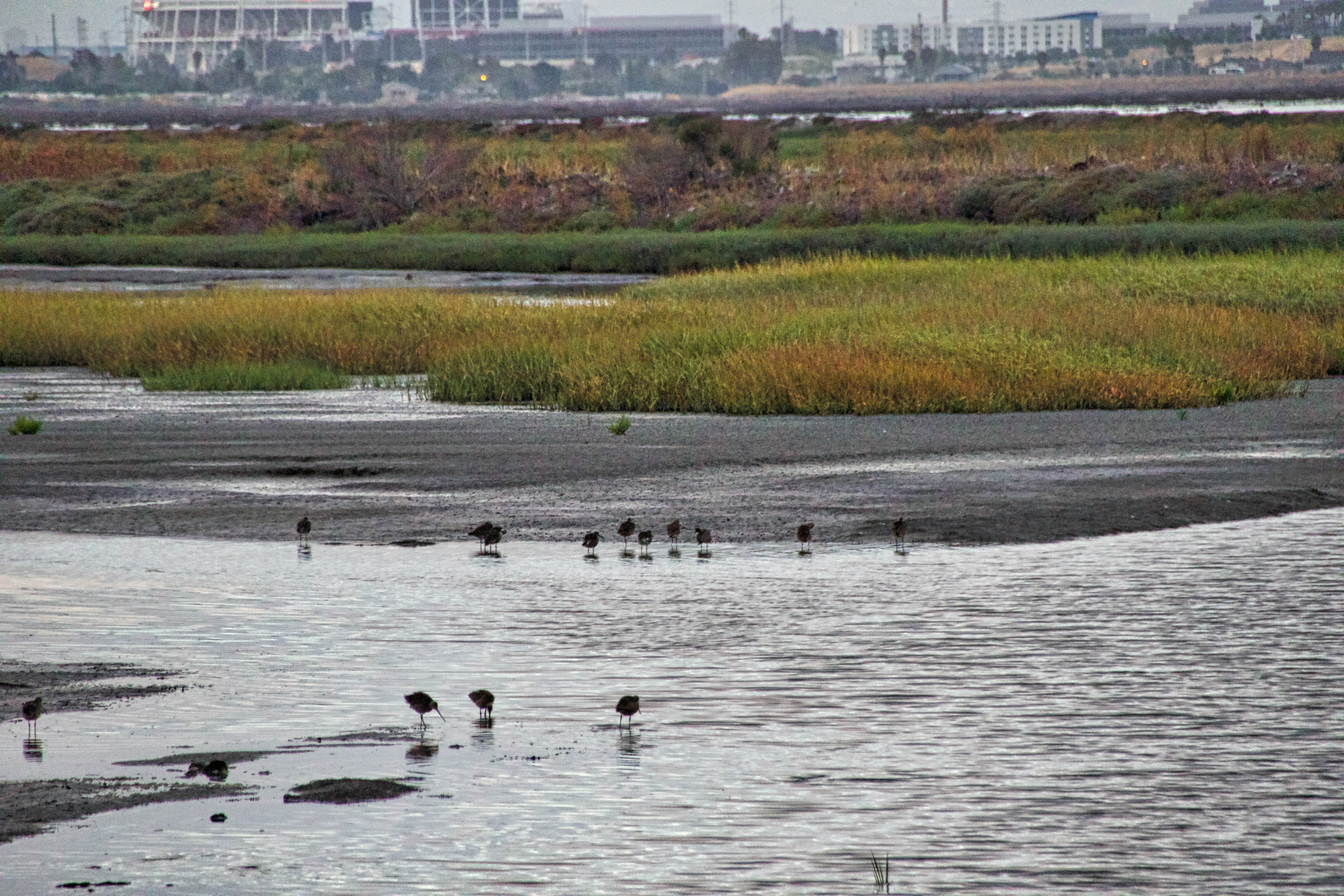What’s that Smell? Are You Going to Fix It?
Once again here at Salty Dave’s Wetland Weblog, it’s time to tackle one of the most common questions I get.* You can find other posts about common questions here.
Today’s set of questions:
- What is that smell?
- Why do the ponds/marshes smell like that?
- Will the project fix that?
These questions arise from the observation that almost all waters and wetlands around the Bay have some degree of noticeable odor at least some of the time. On wide-open shores where waters mix well, that aroma can be mild and pleasant – the character Kramer on the old Seinfeld television show successfully sold his idea for a cologne called “The Beach” to a cosmetics company because everyone loves the smell of the beach. At the other end of the spectrum, some stagnant ponds or areas with poor water circulation can be offensively stinky.
The main reasons for this are embedded in the description of those two places. As a general rule, the better mixed a waterway or shoreline is, the better the water quality is. And better water quality usually means less odor – or at least, less offensive odors.
You see, the scents on a beach, a marsh, a slough, a pond, or any other body of water come largely from organisms that either produce a smell on their own that have died and then decay. That interesting and sometimes nostalgically comforting smell of a nice coastal beach? A lot of it comes from the seaweeds and other marine life that have washed up on shore and are rotting in the sun.
I guess that old saying is true: all things in moderation. Even decaying organic matter. If a little decay on the beach smells good, a whole lot more of it in a less well-mixed water body causes a much stronger smell. Here’s how that works:
In a relatively stagnant and poorly mixed body of water – a small lake, a former salt pond, a backwater slough with limited freshwater input from streams, to name a few examples – algae and aquatic plants will use sunlight and nutrients in the water to grow and reproduce. If there are lots of nutrients and lots of sunlight, this happens faster and to a greater degree than it otherwise would, causing an “algal bloom”. These algal blooms mostly happen in summer and fall, when there are longer periods of sunlight and higher temperatures.
More algae and plants mean that there’s more food for fish and other critters to eat, so there ends up being more of them too. And in those cases, that growth can create a huge demand for oxygen in the water because all of that life – including the plants themselves! - needs oxygen. But water mainly gets its oxygen by absorbing it from the air at the surface. If the water is poorly mixed, like when it’s not windy or when the water isn’t experiencing regular tidal flows or freshwater inputs, this oxygen absorption can be too slow to keep up with the demand. And if living things don’t have oxygen, they die and start to rot – and can get smelly. Further, since it was the lack of mixing in both air and water that led to the overgrowth in the first place, those smells tend to linger in that location instead of blowing away and spreading out, so we notice them more.**
The good news is that almost everything our Project actions will do will increase water circulation and reduce algal blooms and related smells. When we open a former salt production pond to full tidal flows, we increase the amount of mixing there. Water in tidal marshes is always circulating, so there’s always more “stirring” of water at the surface, bringing in more oxygen and reducing die-off. Even in some of the former salt ponds we keep as ponds managed for wildlife, we construct better tide gates and other structures to help us move water in and out more rapidly and thoroughly, so that we maintain better water quality conditions and reduce bad smells.
Of course, we never have perfect control over natural systems. Even in the fully open Bay, which is very well-mixed indeed, there are occasional harmful algal blooms like the big one this past August. Life is complicated, and we are not totally in charge of it.
But overall, yes, we are going to at least partly reduce that smell. Thanks for asking!
*This is probably obvious, but I mean questions that are specifically about the South Bay Salt Pond Restoration Project or related topics. More generally, there are obviously more common questions that I think (hope, really) are not specific to me. Those include:
- Do you need a bag for that?
- Are you sure you want to cancel your YouTube TV subscription?
- Will you chip in with a $5 donation today so we can meet our quarterly fundraising goal?
- Were you raised in a barn?
- Honey, did you remember to get that thing I asked you to get for my friend’s party Saturday night?
- You don’t remember what I told you about Saturday night?
- Do you ever listen to me?
- Why don’t you put things in your calendar?
** Like everything else in this blog, some of my critics tell me, this is an oversimplified story, but I’m trying to illustrate the general picture, not convey the full details.


